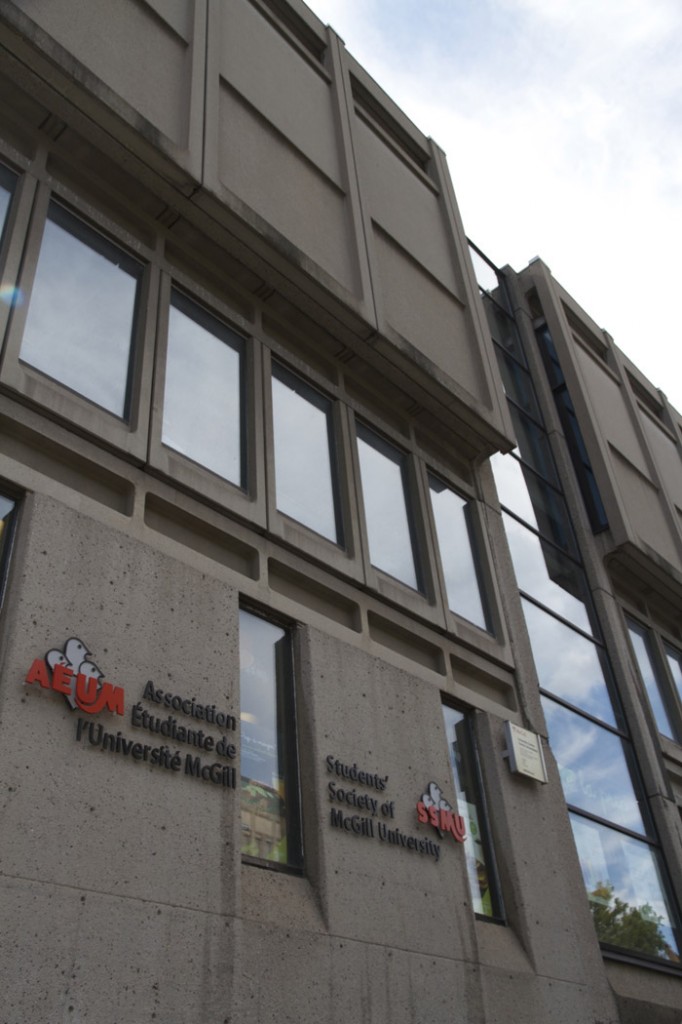Voting has begun for the Students’ Society of McGill University (SSMU) Special Fall Referendum. The questions under consideration pertain to the implementation of a University Centre Building Fee. The ballot comes as a move by the SSMU to gather the necessary funds to afford to continue its current level of operations under its new lease agreement with McGill, signed in Winter 2014.
The referendum is divided into two questions. The first asks whether students support the creation of a University Centre Building Fee. According to the SSMU website, the fee is “payable and non-opt-outable on Minerva […] at $5.78 per full-time student per semester and $2.89 per part-time student per semester.” The second referendum question asks if the fee should be indexed to inflation yearly for the next seven years to cover the rising costs of the SSMU building during the term of the lease.
The question is posed in response to the new lease agreement the SSMU signed with McGill and the $230,000 in back fees owed by SSMU to McGill for upkeep and electricity charges and keeping the building operational while the lease was being negotiated from 2011 to 2014.
This is not the first time SSMU has asked students to vote on the implementation of the University Building fee. In the Winter 2014 referendum period, a set of nearly identical questions were rejected by the student community, with 53.6 per cent of students voting “No” to the first question and 60.8 per cent voting “No” to the second.
According to SSMU President Courtney Ayukawa, although voting “Yes” on the proposed referendum would ultimately see a rise in fees for every undergraduate student attending McGill at the downtown campus, voting “No” would involve drastic reductions in the services that the building offers.
“A concrete change that will happen [is] starting Sept. 29, the building hours are set to drastically decrease,” Ayukawa said. “The building would close at 1 a.m. on Mondays through Fridays and wouldn’t be open on Saturdays or Sundays.”
According to Ayukawa, the establishments and services located within the premises that are run by SSMU, such as Gerts and Mini Courses, would also see price increases.
She stated that SSMU is re-running the question because she believes that students last year were not able to make an informed decision on the SSMU building fee levy. The lack of the formation of a “Yes” committee was a major criticism of SSMU’s dissemination of information for the Winter 2014 referendum questions.
“[There is] no mention of a moratorium [for referendum questions] in the SSMU constitution or bylaws,” Ayukawa said. “I think it’s important that SSMU re-asks the question. This time around, SSMU gave out a lot of information through its website and Facebook page and formed a ‘Yes’ committee […] and people have an opportunity to make a more informed decision. If this time around, students make an informed vote and it happens to be a ‘No’, SSMU will move forward and hopefully find another place for that money to come from.”
Students who share Ayukawa’s point of view do not see the harm in a small increase of fees associated with the SSMU building. Isabelle Oke, U1 Arts, believes that since the building has such an important role in the student community and in the individual lives of many students, reducing its services in any way would be detrimental for students at McGill.
“The SSMU Building gives [students] so many opportunities, and a reduction in those or an increase in their [services’] prices would be much worse than a small fee everyone has to pay,” Oke said.
Not all the students agree with the “Yes” committee, however. Niketan Valapakam, U0 Management, said that as an international student, an additional fee would increase his cost of schooling, something some students already have trouble affording. He also voiced his concern that if this fee should pass, many more like it will end up on the ballot.
“I think that approving more and more fees could lead us down a dangerous road,” Valapakam said. “It always starts off small—with 5 dollars—but in the long run could end up costing students much more.”









